Christopher P Patterson
age ~46
from Lakewood, CO
- Also known as:
-
- Chris P Patterson
- Chistopher Patterson
- Christopher Paterson
Christopher Patterson Phones & Addresses
- Lakewood, CO
- Vicksburg, MS
- Hernando, MS
- Tunica, MS
- Golden, CO
Isbn (Books And Publications)

A Unitary Calculus for Electronic Orbitals
view sourceAuthor
Christopher W. Patterson
ISBN #
0387076999

The United States and the States Under the Constitution
view sourceAuthor
Christopher Stuart Patterson
ISBN #
0837725593
Medicine Doctors

Christopher D. Patterson
view sourceSpecialties:
Family Medicine
Work:
John Short & Associates Medical GroupAnona Medical Center
12294 Indian Rocks Rd, Largo, FL 33774
7275952534 (phone), 7275955059 (fax)
12294 Indian Rocks Rd, Largo, FL 33774
7275952534 (phone), 7275955059 (fax)
Education:
Medical School
Nova Southeastern University College of Osteopathic Medicine
Graduated: 1993
Nova Southeastern University College of Osteopathic Medicine
Graduated: 1993
Procedures:
Vaccine Administration
Conditions:
Acute Bronchitis
Acute Pharyngitis
Acute Sinusitis
Acute Upper Respiratory Tract Infections
Allergic Rhinitis
Acute Pharyngitis
Acute Sinusitis
Acute Upper Respiratory Tract Infections
Allergic Rhinitis
Languages:
English
Description:
Dr. Patterson graduated from the Nova Southeastern University College of Osteopathic Medicine in 1993. He works in Largo, FL and specializes in Family Medicine. Dr. Patterson is affiliated with Largo Medical Center.
Us Patents
-
Process Of Forming Two Beads
view source -
US Patent:7062834, Jun 20, 2006
-
Filed:Dec 1, 2003
-
Appl. No.:10/725916
-
Inventors:Christopher Patterson - Olive Branch MS, US
Stanley J. Sysak - Cordova TN, US -
Assignee:Parker-Hannifin - Cleveland OH
-
International Classification:B23P 11/00
-
US Classification:29505, 29509, 29520, 72372, 285331, 2853821, 2853822, 403282, 403285
-
Abstract:A process for forming a metallic tubular connector of the type having a cylindrical shell which extends circumferentially about a tubular body for joining said tubular connector to a conduit. The process involves using a first forming machine to form a first peripheral bead in a first end portion of a tubular metallic body, having a substantially uniform diameter and wall thickness, reduce the outside diameter of a second end portion, and slope an intermediate surface portion. Then, a second end forming machine tool, carrying a metallic socket, freely receives the tubular body second end portion, contacts the sloped intermediate surface portion, forms a second peripheral bead adjacent the first peripheral bead, while an annular end surface of the socket is compressed and locked between the first and second beads. Further, the tubular body is manufactured from a 5000 series aluminum alloy material.
-
Polymer Rods For Spinal Applications
view source -
US Patent:7766942, Aug 3, 2010
-
Filed:Aug 31, 2006
-
Appl. No.:11/469354
-
Inventors:Christopher M. Patterson - Olive Branch MS, US
Thomas Carls - Memphis TN, US -
Assignee:Warsaw Orthopedic, Inc. - Warsaw IN
-
International Classification:A61B 17/70
-
US Classification:606261, 606254
-
Abstract:A method of manufacturing a curved spinal rod is disclosed. The method includes heating PEEK; injecting the PEEK into an arcuate spinal rod mold; holding the injected PEEK in the mold until the PEEK substantially sets; and removing the injected PEEK from the mold. In another aspect, a spinal rod is disclosed. The spinal rod includes an arcuate main body having a first end portion, a second end portion, and a central portion. The central portion has a non-circular cross-section with a height greater than its width. The first and second end portions and the central portion of the arcuate main body are integrally formed of a polymer such as polyetheretherketone (PEEK). The spinal rod also includes a rounded end cap adapted to mate with at least one of the end portions. The end cap is radiopaque.
-
Variable Stiffness Support Members
view source -
US Patent:7875059, Jan 25, 2011
-
Filed:Jan 18, 2007
-
Appl. No.:11/624401
-
Inventors:Christopher M. Patterson - Olive Branch MS, US
Michael S. Veldman - Memphis TN, US
Randall Allard - Germantown TN, US -
Assignee:Warsaw Orthopedic, Inc. - Warsaw IN
-
International Classification:A61B 17/70
-
US Classification:606261, 606254, 606259
-
Abstract:Spinal support members having varying stiffnesses are disclosed. In one embodiment, an elongated spinal prosthetic includes a pair of curved elongated portions. The portions are formed of materials having different stiffness characteristics such that the stiffness of the prosthetic varies along its length. In another embodiment, an elongated spinal implant includes a pair of threadedly engaged elongated sections. The first section is formed of a first material having a first rigidity. The second section has an inner portion formed of the first material and an outer portion formed of a second material. The second material is less rigid than the first material. In another embodiment, a modular spinal rod is provided. The modular spinal rod includes a pair of connectable rod portions with different stiffness characteristics. In yet another embodiment, a kit for a modular spinal rod includes a plurality of connectable modular rod portions having different stiffness characteristics.
-
Spinal Implant System
view source -
US Patent:7879104, Feb 1, 2011
-
Filed:Nov 15, 2006
-
Appl. No.:11/560169
-
Inventors:Jonathan M. Dewey - Memphis TN, US
Lauren Lyons - Memphis TN, US
Christopher M. Patterson - Olive Branch MS, US -
Assignee:Warsaw Orthopedic, Inc. - Warsaw IN
-
International Classification:A61F 2/44
-
US Classification:623 1716, 623 1711, 606246
-
Abstract:An interspinous spacer system includes a core configured to fit between adjacent spinous processes, a first fork movable relative to the core from a non-use position to an in-use position, and second fork. When in the in-use position, the first fork extends outwardly from a first side of the core and bounds an opening. The second fork extends outwardly from a second side of the core, opposite the first side, and bounds the opening. Third and fourth forks extend outwardly from the first and second sides of the core respectively and form a second opening. The second, third, and fourth forks are affixed relative to the core and relative to each other. The first fork is inserted between spinous processes in the non-use position to avoid damage to a superspinous ligament adjacent the spinous processes. Other aspects and related methods are also disclosed.
-
Locking Device And Method Employing A Posted Member To Control Positioning Of A Stabilization Member Of A Bone Stabilization System
view source -
US Patent:7914559, Mar 29, 2011
-
Filed:May 30, 2006
-
Appl. No.:11/420890
-
Inventors:Thomas A. Carls - Memphis TN, US
Eric C. Lange - Collierville TN, US
Christopher M. Patterson - Olive Branch MS, US -
Assignee:Warsaw Orthopedic, Inc. - Warsaw IN
-
International Classification:A61B 17/70
-
US Classification:606270
-
Abstract:A locking device and method are provided for a bone stabilization system which includes a bone anchor, a coupling mechanism and a stabilization member, wherein the coupling mechanism couples the stabilization member to the bone anchor. The locking device includes a seating member and a posted member. The seating member is operatively associated with the coupling mechanism for securing the stabilization member within the coupling mechanism, and is configured with an opening therein. The posted member, which includes an interface member and a post extending therefrom, is configured for disposition between the seating member and the stabilization member with the post extending therefrom being received into the opening in the seating member when the seating member is employed to secure the stabilization member within the coupling mechanism. The post is sized to engage and facilitate control of the stabilization member as the seating member operatively engages the coupling mechanism.
-
Interspinous Process Devices And Methods
view source -
US Patent:7955392, Jun 7, 2011
-
Filed:Dec 14, 2006
-
Appl. No.:11/610522
-
Inventors:Jonathan M. Dewey - Memphis TN, US
Christopher M. Patterson - Olive Branch MS, US -
Assignee:Warsaw Orthopedic, Inc. - Warsaw IN
-
International Classification:A61F 2/44
A61B 17/70 -
US Classification:623 1716, 606248
-
Abstract:The present application is directed to devices and methods for spacing and/or positioning spinous processes of vertebral members. The device may include a first wing to position on a first lateral side of spinous processes and a second wing to position on a second lateral side of spinous processes. An intermediate member extends between the wings and fits within the interspinous space. The device may be selectively adjustable from a first orientation with the second wing received by the intermediate member. This first orientation may include a reduced sized to facilitate insertion of the device with a lateral approach into the interspinous space. The device may also be moved to a second orientation with the wing deployed from the intermediate member. The second orientation may provide for the second wing to be positioned on the second side of the spinous process opposite from the first wing. The intermediate member may be positioned within the interspinous space to retain a predetermined distraction height.
-
Polymer Rods For Spinal Applications
view source -
US Patent:7968037, Jun 28, 2011
-
Filed:Oct 14, 2008
-
Appl. No.:12/251152
-
Inventors:Christopher M. Patterson - Olive Branch MS, US
Thomas Carls - Memphis TN, US -
Assignee:Warsaw Orthopedic, Inc. - Warsaw IN
-
International Classification:B29C 45/00
-
US Classification:26432813
-
Abstract:A method of manufacturing a curved spinal rod is disclosed. The method includes heating PEEK; injecting the PEEK into an arcuate spinal rod mold; holding the injected PEEK in the mold until the PEEK substantially sets; and removing the injected PEEK from the mold. In another aspect, a spinal rod is disclosed. The spinal rod includes an arcuate main body having a first end portion, a second end portion, and a central portion. The central portion has a non-circular cross-section with a height greater than its width. The first and second end portions and the central portion of the arcuate main body are integrally formed of a polymer such as polyetheretherketone (PEEK). The spinal rod also includes a rounded end cap adapted to mate with at least one of the end portions. The end cap is radiopaque.
-
Set Screw With Deformable Member
view source -
US Patent:8057523, Nov 15, 2011
-
Filed:Jul 23, 2008
-
Appl. No.:12/178412
-
Inventors:Eric Daniel Densford - Memphis TN, US
Jim Michael Mirda - Memphis TN, US
Christopher M. Patterson - Memphis TN, US -
Assignee:Warsaw Orthopedic, Inc. - Warsaw IN
-
International Classification:A61B 17/86
-
US Classification:606308, 606270
-
Abstract:The present application is directed to set screws used with fasteners to capture and engage an elongated member. The set screws include a body sized to attach to a receiver of the fastener. A deformable member may be attached to an end of the set screw and provides for the set screw to more fully engage the elongated member to prevent potential damage to the elongated member and prevent the set screw from backing out of the fastener. In one embodiment, just the deformable member contacts the elongated member. In another embodiment, the deformable member and the body contact the elongated member. In yet another embodiment, a contact member is attached to the deformable member to contact against the elongated member.
Name / Title
Company / Classification
Phones & Addresses
Principal
Open Run Basketball and Fitness Center
Physical Fitness Facility
Physical Fitness Facility
PO Box 140145, Memphis, TN 38114
3216 Garrison Park Cir, Memphis, TN 38119
3216 Garrison Park Cir, Memphis, TN 38119
Accountant
County of Riverside
Regulation/Administrative Transportation Highway/Street Construction · General Government · Space Research and Technology County Government · Public Finance/Taxation/Monetary Policy · Urban/Community Development · Executive Office · Administrative Public Health Programs · Court
Regulation/Administrative Transportation Highway/Street Construction · General Government · Space Research and Technology County Government · Public Finance/Taxation/Monetary Policy · Urban/Community Development · Executive Office · Administrative Public Health Programs · Court
9519556740, 9512753045, 9519553775, 9519553832
TRANSWORLD, LC
APM EXPRESS, LC
Vehicle Records
-
Christopher Patterson
view source -
Address:7211 S Algonquian St UNIT 205, Aurora, CO 80016
-
Phone:3174712575
-
VIN:3VWLX7AJ0BM304337
-
Make:VOLKSWAGEN
-
Model:JETTA
-
Year:2011
Resumes

Executive Director Of Food & Beverage At Ocean Reef Club
view sourcePosition:
Executive Director of Food & Beverage at Ocean Reef Club
Location:
Key Largo, Florida
Industry:
Hospitality
Work:
Ocean Reef Club - Key Largo, Florida since Oct 2012
Executive Director of Food & Beverage
Richey International Oct 2007 - Oct 2012
Senior Consultant
Oean Reef Club Dec 2005 - Oct 2007
Director of Outlets
The Diplomat Country Club May 2003 - Dec 2005
Food and Beverage Manager
Executive Director of Food & Beverage
Richey International Oct 2007 - Oct 2012
Senior Consultant
Oean Reef Club Dec 2005 - Oct 2007
Director of Outlets
The Diplomat Country Club May 2003 - Dec 2005
Food and Beverage Manager
Education:
Florida International University 2000 - 2001
Bachelor of Sciences, Hospitality Management Culinary Institute of America 1997 - 1999
Bachelor of Sciences, Hospitality Management Culinary Institute of America 1997 - 1999

Owner At Chrisp Marketing
view sourcePosition:
Owner at Chrisp Marketing
Location:
United States
Industry:
Marketing and Advertising
Work:
Chrisp Marketing since Sep 2009
Owner
Owner

Christopher Patterson
view sourceLocation:
United States

Christopher Patterson
view sourceLocation:
United States

Full Time Engineering Student At University Of Wisconsin-Madison
view sourcePosition:
Full Time Engineering Student at University of Wisconsin-Madison
Location:
Madison, Wisconsin
Industry:
Medical Practice
Work:
University of Wisconsin-Madison since Sep 2011
Full Time Engineering Student
United States Navy Jun 2005 - Jun 2011
Engineering Laboratory Technician (3366)
Full Time Engineering Student
United States Navy Jun 2005 - Jun 2011
Engineering Laboratory Technician (3366)

Information Systems Programmer At Devry University
view sourcePosition:
information systems programmer/manager at DeVry University
Location:
Greater Denver Area
Industry:
Hospital & Health Care
Work:
DeVry University since Nov 2004
information systems programmer/manager
information systems programmer/manager
Education:
DU/DTC 1997 - 2002
M.S. B.S., COMPUTER ENGINEER/INFORMATION SYSTEMS
M.S. B.S., COMPUTER ENGINEER/INFORMATION SYSTEMS

Christopher Patterson Memphis, TN
view sourceWork:
Kroger
Memphis, TN
Grocery Clerk
Memphis, TN
Grocery Clerk
Education:
Overton High School
Memphis, TN
2014 to 2016
N/A in N/A
Memphis, TN
2014 to 2016
N/A in N/A

Christopher Patterson
view sourceLocation:
United States
Lawyers & Attorneys
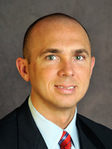
Christopher Lynn Patterson, Cordova TN - Lawyer
view sourceAddress:
Wiseman Bray PLLC
1665 Bonnie Ln Ste 106, Cordova, TN 38016
9013725003 (Office), 9013836599 (Fax)
1665 Bonnie Ln Ste 106, Cordova, TN 38016
9013725003 (Office), 9013836599 (Fax)
Licenses:
Tennessee - Active 2004
Experience:
Partner at Wiseman Bray PLLC - 2004-present
Education:
University of Memphis
Degree - Law
Graduated - 2004
University of Tennessee, Knoxville (main)
Degree - BS - Bachelor of Science - Microbiology
Graduated - 2000
Degree - Law
Graduated - 2004
University of Tennessee, Knoxville (main)
Degree - BS - Bachelor of Science - Microbiology
Graduated - 2000
Specialties:
Construction / Development - 25%
Personal Injury - 25%
Government - 25%
Car / Auto Accident - 25%
Personal Injury - 25%
Government - 25%
Car / Auto Accident - 25%
Languages:
English
Associations:
National Trial Lawyers Association, 2012-present
University of Tennessee Alumni Association - Board of Directors Memphis/Shelby County, 2012-present
American Bar Association, 2004-present
Memphis Bar Association, 2004-present
Tennessee Bar Association, 2004-present
Tennessee Trial Lawyers Association, 2004-present
University of Tennessee Alumni Association - Board of Directors Memphis/Shelby County, 2012-present
American Bar Association, 2004-present
Memphis Bar Association, 2004-present
Tennessee Bar Association, 2004-present
Tennessee Trial Lawyers Association, 2004-present
Description:
I think I am a regular guy. When I am not working, I enjoy spending time with my wife and our one year old son. I also enjoy deer hunting and am an avid...

Christopher Patterson - Lawyer
view sourceSpecialties:
Real Property, Probate & Trust
ISLN:
911924686
Admitted:
1996
University:
University of Florida, Fredric G. Levin College of Law
Law School:
University of Florida, Fredric G. Levin College of Law, JD - Juris Doctor

Christopher Patterson - Lawyer
view sourceOffice:
Christopher Patterson
Specialties:
Real Estate Law
Corporate Law
Workers Compensation Law
Subrogation Law
Estate Planning
Contract Law
Business Law
Trusts & Estates
Real Property Law
Trusts
Corporate Law
Workers Compensation Law
Subrogation Law
Estate Planning
Contract Law
Business Law
Trusts & Estates
Real Property Law
Trusts
ISLN:
904558973
Admitted:
1976
University:
University of Southern California, B.S., 1967
Law School:
McGeorge School of Law, J.D., 1976
License Records
Doctor Of Dental Surgery
Address:
390 S Potomac Way SUITE A, Aurora, CO 80012
License #:
10717 - Active
Issued Date:
May 17, 2012
Renew Date:
Mar 1, 2016
Expiration Date:
Feb 28, 2018
Type:
Dentist
Christopher Adam Patterson
Address:
390 S Potomac Way SUITE A, Aurora, CO 80012
License #:
2786157 - Active
Issued Date:
Jul 19, 2016
Renew Date:
Jul 19, 2016
Expiration Date:
Jul 19, 2021
Type:
Minimal Sedation
Christopher W Patterson
License #:
AR97007 - Active
Category:
Architect
Issued Date:
Apr 4, 2014
Effective Date:
Apr 4, 2014
Expiration Date:
Feb 28, 2019
Christopher John Patterson
License #:
MT014908T - Expired
Category:
Medicine
Type:
Graduate Medical Trainee
Flickr
Plaxo

Christopher M. Patterson
view sourceDecatur, GA

Christopher Patterson
view sourcePittsburghOwner at Chrisp Marketing Past: Business Development/Account Management at Think Communications

Christopher Patterson
view sourceAtlanta, GeorgiaAssociate Director for Court Services at Administr...
Myspace
Youtube

Christopher PrinceCap Pat...
view source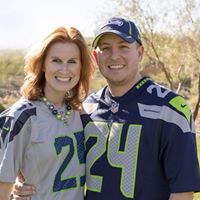
Christopher Michael Patte...
view source
Christopher David Patterson
view source
Christopher Bigmanoncampu...
view source
Christopher AndJessica Pa...
view source
Christopher Christyles Pa...
view source
Christopher AlphaMale Pat...
view source
Christopher Deontray Patt...
view sourceClassmates
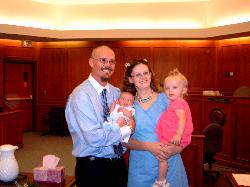
Christopher Cayton (Patt...
view sourceSchools:
St. James School Denver CO 1985-1989, East Middle School Aurora CO 1986-1987, William Smith High School Aurora CO 1990-1996, Canadian High School Canadian OK 1994-1998
Community:
Frank Weeks, Tina Scott, Jeremiah Lentz, Lorena Montoya, Matthew Sems, Richard Lusk, Laney Jacobs, David Shaffer

Christopher Patterson
view sourceSchools:
Florence High School Florence MS 2001-2005
Community:
Mindy May, Carl Hayes

Christopher Patterson
view sourceSchools:
Twiggs County High School Jeffersonville GA 1993-1997
Community:
Melvin Dickey

Christopher Patterson
view sourceSchools:
Southampton High School Courtland VA 2003-2007
Community:
Rose Garner, Cindy Shearin

Christopher Patterson
view sourceSchools:
Miller Middle School Macon GA 1990-1994
Community:
Lisa Johnson, Allison Mason, Crissy James

Christopher Patterson
view sourceSchools:
Virginia Polytechnic Inst. and State University Blacksburg VA 2001-2005
Community:
Paul Dunham, Robert Boyle, Boyd Engan, Carol Asplund, Gina Gentile

Christopher Patterson
view sourceSchools:
McNair Sr High School Atlanta GA 1991-1995
Community:
Clolita Castleberry, Frederick Jinks

Christopher Patterson
view sourceSchools:
Warren High School Warren IN 1985-1989
Community:
Elaine Spearing, Marcus Gray
Googleplus

Christopher Patterson
Work:
Campus Recreation and Intramurals - Fitness Supervisor (2007-2011)
Sports Medicine South - Physical Therapy Intern (2011-2011)
Golds Gym - Personal Trainer (2004-2006)
Sports Medicine South - Physical Therapy Intern (2011-2011)
Golds Gym - Personal Trainer (2004-2006)
Education:
Georgia Southern University - Kinesiology and Exercise Science, Parkview High School - Business Management
Relationship:
Married
About:
Graduate of Georgia Southern University Bachelor of Science in Kinesiology with an emphasis in Exercise Science/ Sports Medicine/ Physical Therapy. Married since 2005
Bragging Rights:
Runway Modeled and Flew a Plane
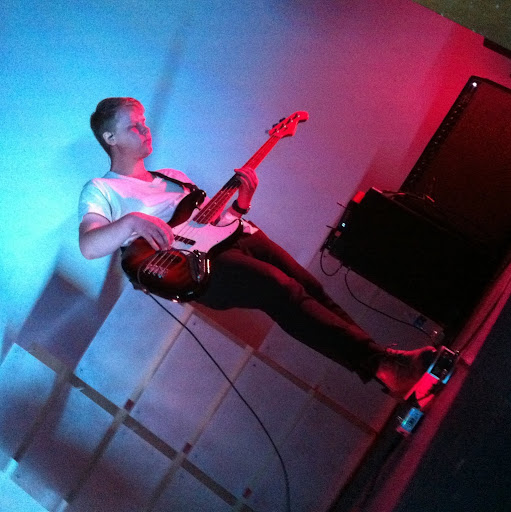
Christopher Patterson
Work:
MacMedia Inc - Sales Rep (2011)
Education:
Calvary Chapel Bible College - Theology
Tagline:
Sweet hangs.
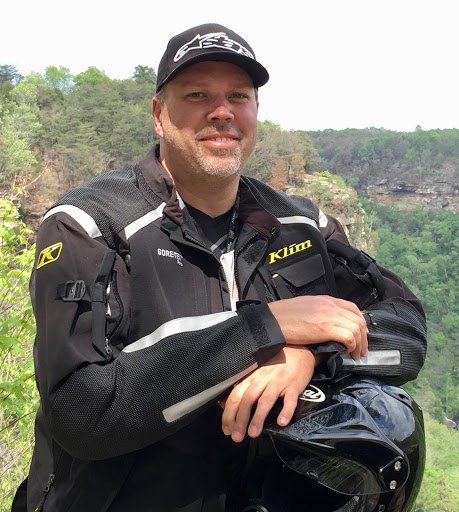
Christopher Patterson
Work:
TerraMoto Outfitters - Founder (2013)

Christopher Patterson
Education:
Calumet High School - J.R.O.T.C
Relationship:
Single
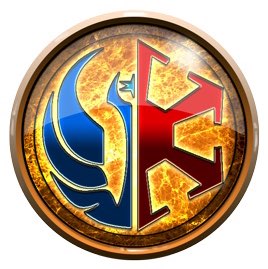
Christopher Patterson
Work:
Florida department of corrections
Education:
Leto

Christopher Patterson
Work:
Oracle Corporation
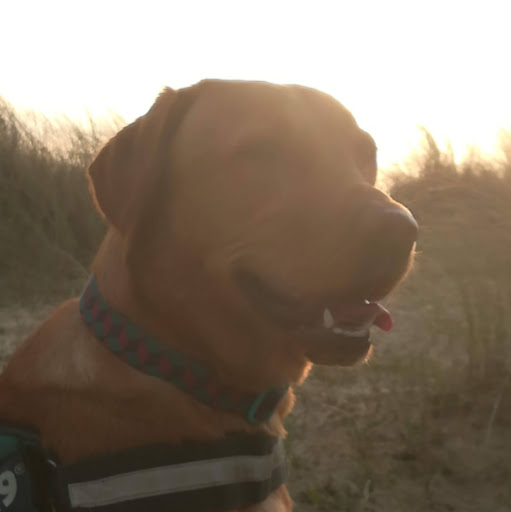
Christopher Patterson
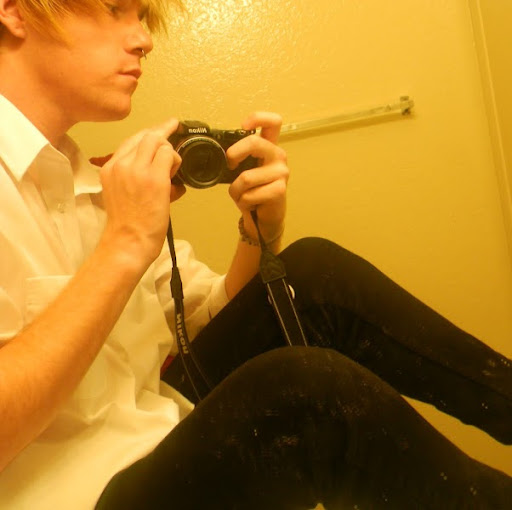
Christopher Patterson
Get Report for Christopher P Patterson from Lakewood, CO, age ~46













